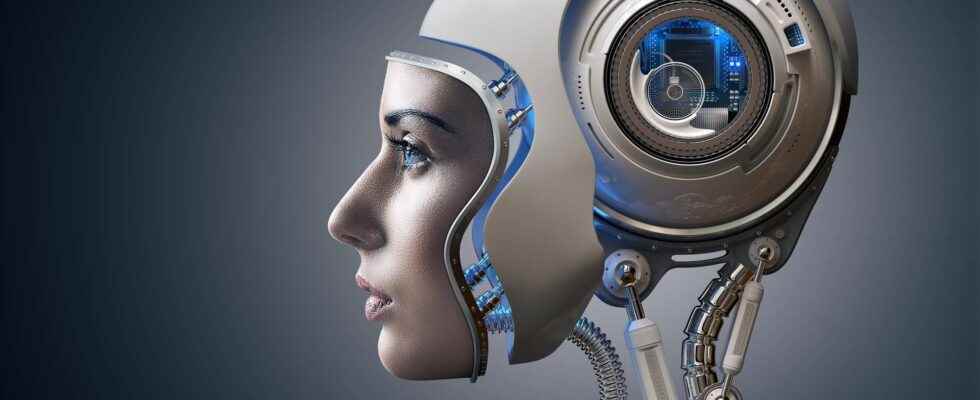Cyborg is a portmanteau word formed from the English words cybernectic and organization and designate a cybernetic organism, that is to say a being that is both organic and biomechatronic. Biomechatronics is a science that combines biomechanics with robotics and medicine with the aim of integrating mechanical elements into an organic body. More simply, a cyborg is a human being who has received transplants mechanical or electronic elements.
It was first in literary works that the concept was born, with Edgar Allan Poe in 1843, for example. The word itself was coined in 1960 by researchers Manfred Clynes and Nathan Kline, imagining an enhanced human being who could survive in hostile extraterrestrial environments.
The term is mostly used in science fiction and futurology. Cyborgs are found in many literary works (The eyes of Heisenbergof Franck Herbert, the Cyborg superhero of DC Comics) and cinematographic (Robocop, The 3 Billion Man, Tetsuo).
But, in a way, cyborgs already exist. People with electronic pacemakers, prosthesesofjoints artificial, systems ofdrug implantationofimplants intraocular and artificial skin can be considered cyborgs, even if the term may seem pejorative.
What is a cyborg for?
Whether in a work of fiction or in reality, there are several reasons why a human being can become a cyborg. The prostheses and implants are necessary or recreational.
The cyborg technology can be used for purposes:
- restorative, to restore lost functions, replace missing organs and limbs;
- normalizing, to bring some people back to an indistinguishable normality;
- ambiguous and reconfiguring, by creating post-human beings;
- of improvement.
They are used today in medicine, military research, sport and art.
The future of robotics is a topic that sounds like science fiction. Formerly born of the imagination, the android or the cyborg are today entities that can be produced by science. In this interview, the director of the research laboratory of the International Institute of Multimedia, Jean-Claude Heudinous, explains the challenges that will have to be met to create the robots of tomorrow. © Futura-Sciences
How does a cyborg work?
A cyborg is essentially a human-machine system in which either the human voluntarily controls the cybernetic elements (a robotic hand, a exoskeleton), or these elements work independently (a pacemaker). They work mechanically or electronically. The integration of cybernetic elements is usually done during a surgical operation.
There are dozens of different technologies behind implants and prostheses that make a human being a cyborg. Here are some examples…
“Luke’s arm”
Created by Mobius Bionics and named after the character of Star Wars, Luke Skywalker, this advanced prosthesis grants its user the sense of touch. Of the sensors electronics receive signals from the wearer’s muscles which the device then translates into movements physical. The wearer can manipulate multiple joints at once through switches that they can control with their feet.
The Virob robot
The Virob robot is a micro robot capable of flowing through blood vessels to inject a predefined dose of drug to a specific organ. For this he uses electromagnetic waves harmless.
Neil Harbisson’s antenna
Artist Neil Harbisson is colorblind. He developed an electronic antenna mounted on the back of his skull which transforms the frequencies of the light in vibes. His brain interprets them as sound, allowing it to to hear the color “.
You will also be interested
[EN VIDÉO] Interview: can transhumanism make humans immortal? The race towards augmented humans is on. Previously a mere fantasy, the post-human is, according to some, about to be born. Futura met Jean-Claude Heudin, director of the research laboratory of the IIM (Institute of Internet and Multimedia), so that he could speak to us in more detail about transhumanism.
Interested in what you just read?
